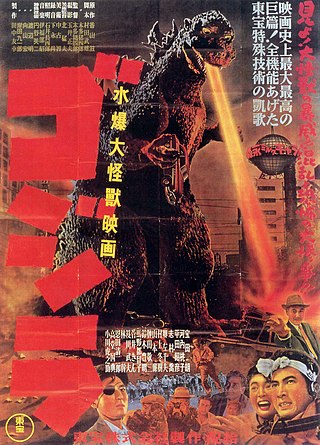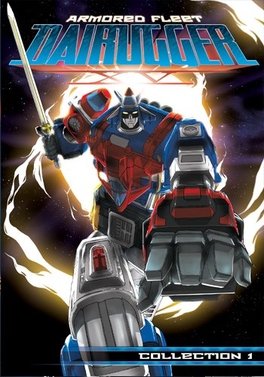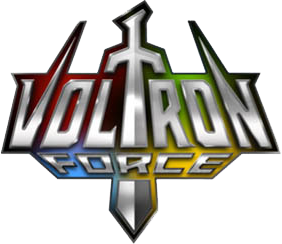Animation in the United States in the television era was a period in the history of American animation that slowly set in with the decline of theatrical animated shorts and the popularization of television animation that started in the late 1950s, reached its peak during the 1970s, and ended around the mid-1980s. This era is characterized by low budgets, limited animation, an emphasis on television over the theater, and the general perception of cartoons being primarily for children. Due to the perceived cheap production values, poor animation, and mixed critical and commercial reception, the era is generally looked back upon negatively by critics and animation historians. The television animation of this period is often referred to as the dark age of American animation, while the theatrical animation from the time is sometimes referred as the bronze age.

Voltron is an American animated television series franchise that features a team of space explorers who pilot a giant super robot known as "Voltron". Produced by Peter Keefe and Ted Koplar through his production company World Events Productions, Voltron was an adaptation of several Japanese anime television series from Toei Animation. The original television series aired in syndication from September 10, 1984, to November 18, 1985. The first season of Voltron, featuring the "Lion Force Voltron", was adapted from the series Beast King GoLion. The second season, featuring the "Vehicle Team Voltron", was adapted from the unrelated series Armored Fleet Dairugger XV.

Rankin/Bass Animated Entertainment was an American production company located in New York City, and known for its seasonal television specials, usually done in stop motion animation. Rankin/Bass's stop-motion productions are recognizable by their visual style of doll-like characters with spheroid body parts and ubiquitous powdery snow using an animation technique called Animagic.

Toei Animation Co., Ltd. is a Japanese animation studio primarily controlled by its namesake Toei Company. It has produced numerous series, including Sally the Witch, GeGeGe no Kitarō, Mazinger Z, Galaxy Express 999, Cutie Honey, Dr. Slump, Dragon Ball, Saint Seiya, Sailor Moon, Slam Dunk, Digimon, One Piece, Toriko, World Trigger, The Transformers, and the Pretty Cure series.

Tokusatsu is a Japanese term for live-action films or television programs that make heavy use of practical special effects. Credited to special effects director Eiji Tsuburaya, tokusatsu mainly refers to science fiction, war, fantasy, or horror media featuring such technology but is also occasionally dubbed a genre itself. Its contemporary use originated in the Japanese mass media around 1958 to explain special effects in an easy-to-understand manner and was popularized during the "first monster boom" (1966-1968). Prior to the monster boom, it was known in Japan as Tokushu gijutsu or shortened Tokugi.

Shotaro Ishinomori was a Japanese manga artist who became an influential figure in manga, anime, and tokusatsu, creating several immensely popular long-running series such as Cyborg 009, the Super Sentai series, and the Kamen Rider series. He was twice awarded by the Shogakukan Manga Awards, in 1968 for Sabu to Ichi Torimono Hikae and in 1988 for Hotel and Manga Nihon Keizai Nyumon. He was born as Shotaro Onodera in Tome, Miyagi, and was also known as Shotaro Ishimori prior to 1986, when he changed his family name to Ishinomori by adding the no (ノ) character in katakana.

Toei Company, Ltd. is a Japanese entertainment company. Headquartered in Ginza, Chūō, Tokyo, it is involved in film and television production, distribution, video game development, publishing, and ownership of 34 movie theaters. Toei also owns and operates studios in Tokyo and Kyoto and holds shares in several television companies. The company is renowned for its production of anime and live-action dramas known as tokusatsu, which incorporate special visual effects. It is also known for producing period dramas. Internationally, Toei is the majority shareholder of Toei Animation and is recognized for its franchises such as Kamen Rider and Super Sentai.
Anime-influenced animation or Animesque is a type of non-Japanese works of animation that are similar to or inspired by anime. Generally, the term anime refers to a style of animation originating from Japan. As Japanese anime became increasingly popular, Western animation studios began implementing some visual stylizations typical in anime—such as exaggerated facial expressions and "super deformed" versions of characters.

Armored Fleet Dairugger XV is a mecha anime series aired in Japan from 1982 to 1983 for 56 episodes.

An animation studio is a company producing animated media. The broadest such companies conceive of products to produce, own the physical equipment for production, employ operators for that equipment, and hold a major stake in the sales or rentals of the media produced. They also own rights over merchandising and creative rights for characters created/held by the company, much like authors holding copyrights. In some early cases, they also held patent rights over methods of animation used in certain studios that were used for boosting productivity. Overall, they are business concerns and can function as such in legal terms.

Lightspeed Electroid Albegas is an anime series that aired from 1983 to 1984 in Japan, Latin America, Spain and Italy. There were 45 episodes aired at 25 minutes each. Other loosely translated names are "Arbegas", "Arebegas", "Lightspeed ElectroGod Arbegas" and "Arbegas: El Rayo Custodio".
Studiopolis, Inc. is an American post-production studio located in Studio City, Los Angeles. It specializes in voiceover recording and dubbing for cartoon, anime, and video game projects. They were formerly known as Screenmusic Studios and then Studio E Productions until 2005. The studio is owned by Jamie Simone. It has another studio located in Burbank, California.

Voltron: Fleet of Doom is an American-Japanese television special involving heroes of both Voltron series working together to defeat their sworn enemy, King Zarkon, who aligns with the remnants of Emperor Zeppo's Drule Empire to create a mighty armada called the Fleet of Doom.
Marc Handler is an American writer, producer, and voice director. He has contributed to various animated series, including Cowboy Bebop, Astro Boy, FLCL, Stitch & Ai, and Voltron. Handler is noted for his role as a story editor on the 2003 Astro Boy series, marking a significant collaboration between American and Japanese production teams.

Voltron Force is an American animated television series that premiered on June 16, 2011, exclusively on the Nicktoons television network. It is a sequel to the 1980s animated series Voltron and the 1999 CGI series Voltron: The Third Dimension. It ended after one season on April 25, 2012, with the planned second season being unproduced.
Peter Eugene Keefe was an American television producer best known for creating the popular series Voltron, an English dubbed combination of Beast King GoLion, and Armored Fleet Dairugger XV, two similar, but unrelated “mecha” anime series originally created and produced by Toei Animation. Keefe's work on the series is credited with introducing American audiences to Japanese animation and influenced later children's programs like the Dragon Ball, Pokémon, and Power Rangers franchises., although Japanese programs, including such programs as Astro Boy, and Ultraman, had aired on American television prior to the premiere of Voltron.

Universal Animation Studios LLC is an American animation studio and a division of Universal Pictures, which is a subsidiary of NBCUniversal, which is owned by Comcast. It has produced direct-to-video sequels to Universal-released feature films, such as The Land Before Time, An American Tail, Balto, and Curious George, as well as other films and television series.

Voltron: Legendary Defender is an American animated mecha television series produced by DreamWorks Animation Television and World Events Productions. It is animated by South Korean studio Mir for Netflix. It is a reboot of the Voltron franchise and the Japanese anime series Beast King GoLion. Its animation is a mix of anime-influenced traditional animation for characters and backgrounds and CGI for Voltron action sequences. Voltron: Legendary Defender is set in a science fiction universe where planetary energy called quintessence can be used to power vehicles and magic. The series follows the adventures of the Paladins of Voltron who must learn to work together to form the legendary robot Voltron and use it to defeat the Emperor Zarkon and the Galra Empire. The series ran from June 10, 2016 to December 14, 2018, having released 78 episodes over 8 seasons.

Voltron is a 1984 American-Japanese animated television series produced by World Events Productions for a total of 124 episodes. The series is an adaptation of the Japanese super robot anime series Beast King Go-Lion, which was dubbed into English and edited to create Voltron episodes. Later episodes also use footage from the mecha anime Armored Fleet Dairugger XV.














